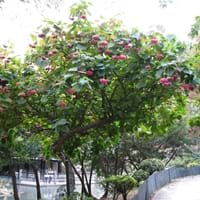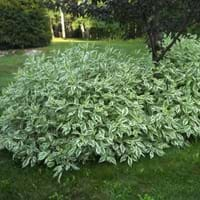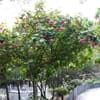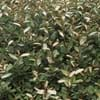Life Span
Perennial
Perennial
Origin
Eastern Africa, Madagascar
North America, Northeastern United States
Types
Not Available
Not Available
Habitat
gardens, Screen Cottage and Informal Garden
along watercourse, gardens, Humid climates, Prairies, Roadsides
USDA Hardiness Zone
9-15
3-8
Sunset Zone
H1, H2, 22, 23, 24
A1, A2, A3, 1a, 1b, 2a, 2b, 3a, 3b, 4, 5, 6, 7, 8, 9, 14, 15, 16, 17, 18, 19, 20, 21
Habit
Oval or Rounded
Thicket/Colonizing
Flower Color
Pink, Hot Pink, Magenta, Rose
White
Flower Color Modifier
Not Available
Not Available
Fruit Color
Not Available
Not Available
Leaf Color in Spring
Green, Light Green
White, Dark Green
Leaf Color in Summer
Green
White, Dark Green
Leaf Color in Fall
Green
Red, Burgundy
Leaf Color in Winter
Green
Not Available
Plant Season
Spring, Winter
Spring, Summer, Fall, Winter
Sunlight
Full Sun, Partial Sun
Full Sun, Partial Sun, Partial shade
Type of Soil
Loam, Sand
Clay, Loam, Sand
The pH of Soil
Acidic, Neutral
Acidic, Neutral, Alkaline
Soil Drainage
Well drained
Average
Bloom Time
Early Spring, Spring, Winter, Late Winter
Late Spring, Early Summer
Repeat Bloomer
Not Available
No
Tolerances
Drought
Wet Site, Pollution
Where to Plant?
Ground, Pot
Ground, Pot
How to Plant?
Semi-hardwood and hardwood cuttings, Stem Cutting
Divison, Seedlings, Stem Planting
Plant Maintenance
Medium
Medium
Watering Requirements
Average Water Needs, Do Not over Water, Requires regular watering
Allow soil to be completely dry in between waterings, Keep ground moist, Prefer drip-irrigation instead of Over-head watering, Water more in summer
In Summer
Lots of watering
Lots of watering
In Spring
Moderate
Moderate
In Winter
Average Water
Average Water
Soil pH
Acidic, Neutral
Acidic, Neutral, Alkaline
Soil Type
Loam, Sand
Clay, Loam, Sand
Soil Drainage Capacity
Well drained
Average
Sun Exposure
Full Sun, Partial Sun
Full Sun, Partial Sun, Partial shade
Pruning
Remove damaged leaves, Remove dead branches, Remove dead leaves
Do not prune during shooting season, Prune if you want to improve plant shape, Remove dead branches, Remove dead leaves, Remove deadheads, Shape and thin as needed
Fertilizers
All-Purpose Liquid Fertilizer
All-Purpose Liquid Fertilizer
Pests and Diseases
Red blotch
Pests and diseases free, Red blotch
Plant Tolerance
Drought
Drought
Flower Petal Number
Not Available
Single
Foliage Texture
Coarse
Medium
Foliage Sheen
Not Available
Matte
Attracts
Butterflies
Birds
Allergy
Not Available
no allergic reactions
Aesthetic Uses
Cottage Garden, Formal Garden, Showy Purposes
Showy Purposes
Beauty Benefits
Not Available
Not Available
Environmental Uses
Air purification
Air purification
Medicinal Uses
Not Available
Back pain
Part of Plant Used
Flowers
Not Available
Other Uses
Dried heads are used in floristry, Grown for shade
Not Available
Used As Indoor Plant
No
No
Used As Outdoor Plant
Yes
Yes
Garden Design
Hedges, Mixed Border, Screening, Wind Break, Tropical
Feature Plant, Foundation, Hedges, Mixed Border, Screening, Wind Break
Botanical Name
DOMBEYA wallichii
CORNUS sericea 'Variegata'
Common Name
Pinkball, Pink ball tree, Tropical hydrangea
Variegated Dogwood
In Hindi
Pink Ball Tree
Variegated Dogwood
In German
Pink Ball Tree
Verändertes Hartriegel
In French
Pink Ball Tree
panaché Dogwood
In Spanish
Pink Ball Tree
abigarrado Cornejo
In Greek
Pink Ball Tree
Κυμαίνεται Dogwood
In Portuguese
Pink Ball Tree
variegada Dogwood
In Polish
Dombeja Wallicha
Kolorowy Dereń
In Latin
Pink Ball Tree
Dogwood variegated
Phylum
Tracheophyta
Not Available
Class
Magnoliopsida
Not Available
Family
Sterculiaceae
Cornaceae
Clade
Angiosperms, Eudicots, Rosids
Angiosperms, Asterids, Eudicots
Tribe
Not Available
Not Available
Subfamily
Dombeyoideae
Not Available
Number of Species
Not Available
Not Available
Importance of Pink Ball Tree and Variegated Dogwood
Want to have the most appropriate plant for your garden? You might want to know the importance of Pink Ball Tree and Variegated Dogwood. Basically, these two plants vary in many aspects. Compare Pink Ball Tree and Variegated Dogwood as they differ in many characteristics such as their life, care, benefits, facts, etc. Every gardener must at least have the slightest clue about the plants he wants to plant in his garden. Compare their benefits, which differ in many ways like facts and uses. The medicinal use of Pink Ball Tree is Not Available whereas of Variegated Dogwood is Back pain. Pink Ball Tree has beauty benefits as follows: Not Available while Variegated Dogwood has beauty benefits as follows: Not Available.
Compare Facts of Pink Ball Tree vs Variegated Dogwood
How to choose the best garden plant for your garden depending upon its facts? Here garden plant comparison will help you to solve this query. Compare the facts of Pink Ball Tree vs Variegated Dogwood and know which one to choose. As garden plants have benefits and other uses, allergy is also a major drawback of plants for some people. Allergic reactions of Pink Ball Tree are Not Available whereas of Variegated Dogwood have no allergic reactions respectively. Having a fruit bearing plant in your garden can be a plus point of your garden. Pink Ball Tree has showy fruits and Variegated Dogwood has showy fruits. Also Pink Ball Tree is not flowering and Variegated Dogwood is not flowering . You can compare Pink Ball Tree and Variegated Dogwood facts and facts of other plants too.





